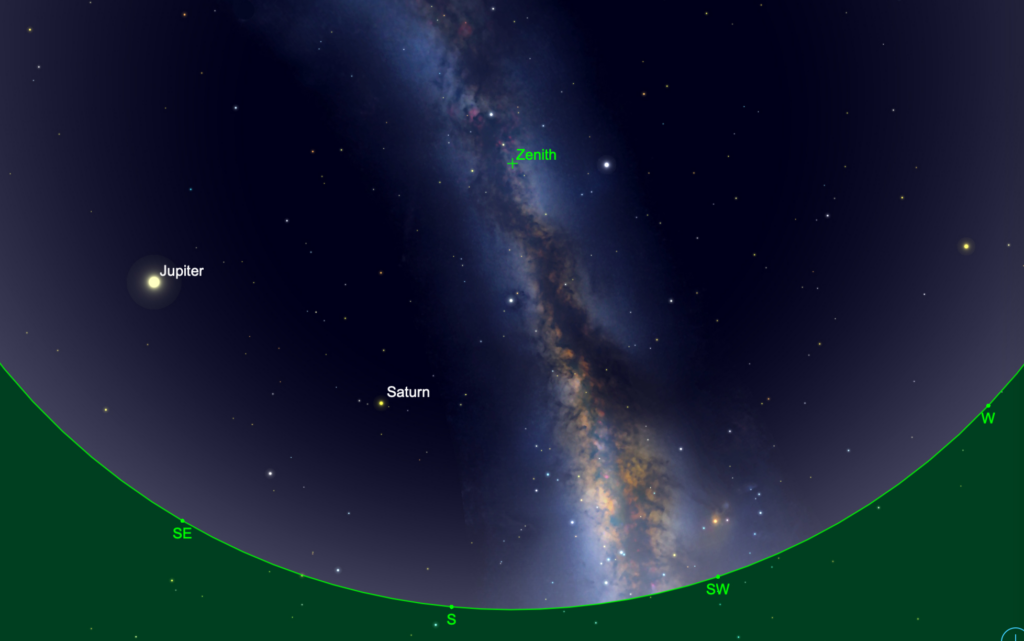Sky Report: September 12-18

The moon rises late, leaving the evening sky dark, so this week and next is a great time to enjoy the wonders of the summer sky. There’s a lot you can see with your eyes alone, and of course more with binoculars. This week I’ll describe what you can see of the Milky Way, our home galaxy of roughly 400 billion stars, from your own backyard.
We live within the Milky Way, lying roughly 1/3 of the way from the center to an outer edge. This makes our Milky Way Galaxy not symmetrical.
Toward 10 p.m. the Milky Way stretches from the southwest to straight overhead and on to the northeast, and this is a wonderful time to compare the inward and outward directions. When you look low in the southwest, toward Sagittarius, you are looking toward the Milky Way’s center, its “downtown”, where there are more stars and they’re packed more tightly. When you look to the northeast, toward Cassiopeia and Perseus, in contrast, you’re looking toward the outer edge where there are fewer stars and they’re more widely spaced. With your eyes alone notice how much brighter and wider it is in the southwest than the northeast; how many times brighter and wider do you observe that it is? With binoculars or a wide-angle telescope notice how many more stars, especially fainter stars, there are in the southwest; how would you compare with the northeast? The contrast is striking, once you know to look for it, and this week and next you can see both halves at the same time to compare. Be sure to look before the moon becomes too bright at the end of the month.
For extra credit notice the wide split that runs up the Milky Way from near the horizon to the zenith. It’s striking once you notice it, and it’s called The Great Rift (Google it). This is not an actual split in the Milky Way but rather is the effect of countless dark clouds of gas and dust that lie within the Milky Way and that block the light from stars beyond. If those clouds weren’t there the Milky Way would be many times brighter. Look for its edge in binoculars which in some places (in Scutum) is surprisingly sharp.
Planets are out too: Saturn, Jupiter, and Mars, in order of appearance. Saturn is in the southeast, and it’s brighter than any star in the summer sky so you can’t miss it. Even brighter is Jupiter, which rises about 45 minutes after sunset and which follows Saturn across the sky as the earth turns. Mars rises around midnight and it’s brighter than any star until Sirius rises 3 hours before the sun. The waning gibbous moon is near Mars on the 16th and 17th. Venus rises less than an hour before the sun but you shouldn’t expect to see it until the end of the year when it reappears in the evening sky.
Stellar Vista Observatory provides portable telescopes and tripod mounted binocular kits on loan for free to residents and visitors in Kane County. Enhance your enjoyment of the night sky! For details or to request a loan, visit https://stellarvistaobservatory.org/discover-the-night-sky/ or drop in to the Kane County Office of Tourism.
The Sky Report is presented as a public service by the Stellar Vista Observatory, a nonprofit organization based in Kanab, Utah, which provides opportunities for people to observe, appreciate, and comprehend our starry night sky. Additional information is at www.stellarvistaobservatory.org. Send questions and comments to John@StargazingAdventures.org.






Comments are closed.